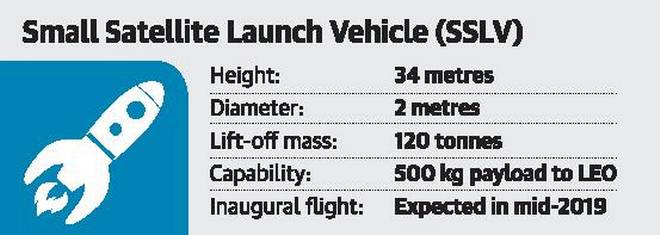ISRO hopes to launch it in six months
ISRO’s Vikram Sarabhai Space Centre (VSSC) at Thumba here has completed the design for the Small Satellite Launch Vehicle (SSLV), the ‘baby rocket’ billed as the quickest way to space for small-sized satellites.
The SSLV promises on-demand access to space, with the rocket assembly taking a mere 15 days and minimum personnel to do it, VSSC officials said.
“The design is ready. We hope to launch the first SSLV in six months,” said S. Somanath, director of VSSC, ISRO’s lead center for launch vehicles.
On the launchpad, the SSLV will stand 34 meters tall, 10 meters shorter than the Polar Satellite Launch Vehicle (PSLV) and around 15 meters shorter than the Mk-II version of the Geosynchronous Satellite Launch vehicle (GSLV). It is also a ‘thinner’ launch vehicle, possessing a diameter of just two meters.
With a lift-off mass of 120 tonnes, the SSLV can place a 500 kg payload at a height of 500 km in the Low Earth Orbit (LEO).
The SSLV has three solid motor stages, and like the PSLV and GSLV, can accommodate multiple satellites, albeit smaller ones. Unlike the PSLV and GSLV, the SSLV can be assembled both vertically and horizontally.
It’s bigger siblings are assembled only in an upright position in the assembly bays at the Satish Dhawan Space Centre at Sriharikota.
“In that respect, the SSLV is like the old SLV and ASLV which could be assembled flat on the ground,” a VSSC spokesperson said on Thursday.
Ultimately, the SSLV is meant to cater to the commercial satellite launch market, said S. Rakesh, CMD of Antrix Corporation, ISRO’s commercial arm.
The launch vehicle is expected to be a money spinner for the corporation, which will be jointly managing the rocket with ISRO.

